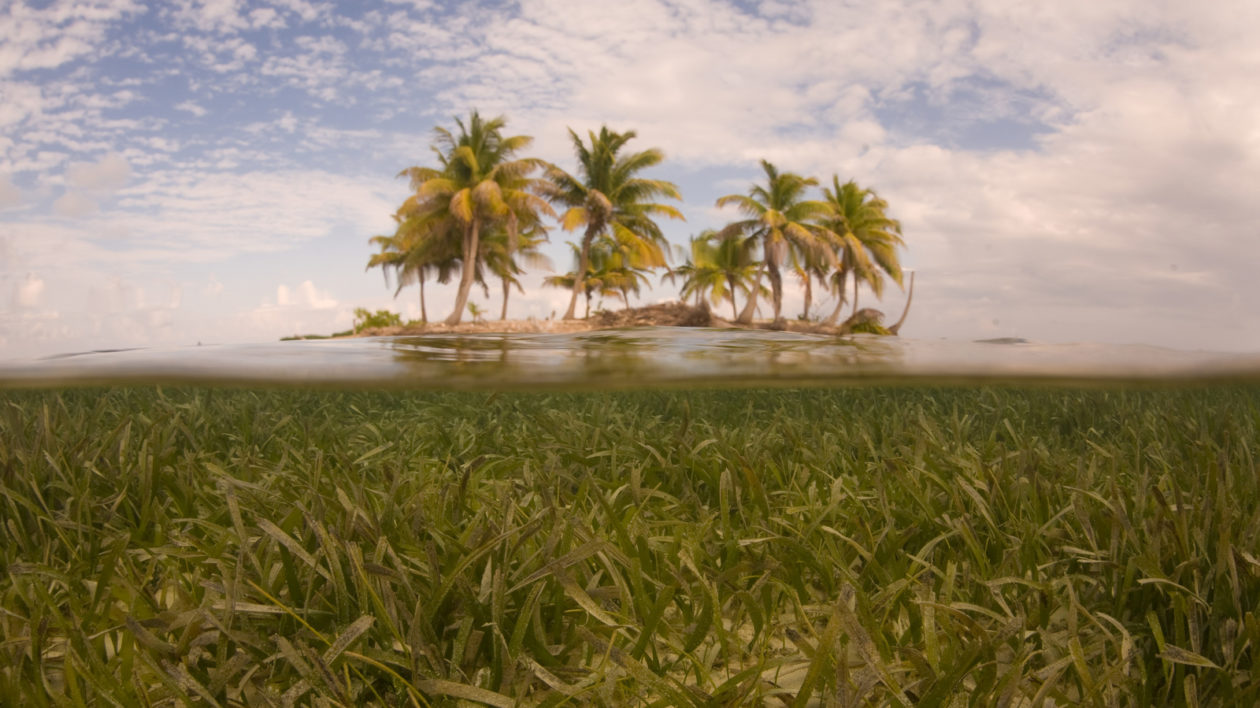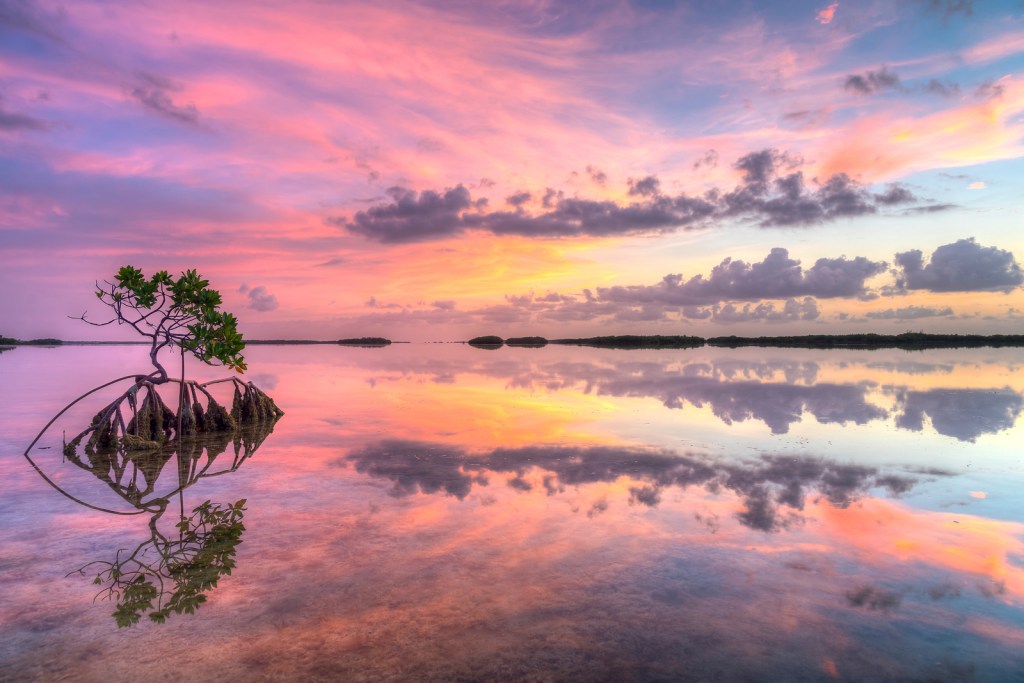Climate change is a portfolio problem. There’s no one cause, but rather a calamitous portfolio. Depending on your politics, history, culture or geography, you may want to focus attention on over-consumption, or overpopulation, or the industrial revolution, big agriculture, fossil fuels or deforestation.
With no one cause, there’s no one solution. We can’t instantly stop burning fossil fuels. We can’t halt the juggernaut of consumer culture. Ending deforestation won’t be enough, and switching to renewable energy won’t happen fast enough. We have to build up a portfolio of responses.
One of those options needs to be “blue carbon.”
Storage & Scrubbing on the Coasts
Lining vast stretches of the world’s coastlines there is a thin emerald ribbon created from three habitats —mangrove forests, seagrass meadows and saltmarshes — these coastal wetlands are the dynamos and the investment banks we call blue carbon. Stuck in the no-man’s land of intertidal and shallow coastal waters, these often understated habitats don’t appear to be a match for the vast expanses of the Amazon or the Congo. But we need to notice them, because they are among the most productive ecosystems in the world.
These three types of coastal wetland have two critical functions for stemming climate change: they are both carbon stores and carbon scrubbers.
There’s more to carbon storage than the shaggy splendour of giant trees — the soil under all of these coastal ecosystems is a rich peat, descending deep beneath the delicate fronds of seagrass banks in the Mediterranean or hidden below the close-cropped herbs of a stretch of saltmarsh in an industrial estuary.
Our best estimates suggest that these coastal wetlands might host more than 17 giga-Tonnes of carbon. If we destroy this habitat and if we convert the ground to agriculture, aquaculture, coastal ports, or industry we release even more carbon dioxide into the atmosphere. Carbon that was once packed and stored away for hundreds or thousands of years beneath the mangroves.

Worryingly, these wetlands are being lost faster than almost any other habitats. We’ve estimated that 12.6 GtCO2e have been released though the losses of coastal wetlands since 1990, which is the equivalent to the entire emissions for the United Kingdom over that same period.
Storage isn’t the only benefit from coastal wetlands. These habitats actually drawn carbon dioxide out of the atmosphere and pack it away, permanently, into the ground. An estimated 680 tonnes of carbon dioxide are being sequestered every minute by the world’s coastal wetlands.
Wetlands plants draw in carbon dioxide via photosynthesis, converting it to complex carbon compounds and permanently sequestering it in woody matter, leaves and from them into the waterlogged soils where it remains trapped. Although other ecosystems also create peat, they don’t help in the same way —unfortunately the freshwater that permeates their soils enables biochemical pathways that release methane, a potent greenhouse gas. But saline coastal wetlands release very little methane. They represent biological carbon capture and storage scale.
The Nature Conservancy’s blue carbon counter is racking up the emissions locked away by coastal wetlands— 680 tonnes per minute, or almost a million tonnes every day. Since 1990, coastal wetlands have sequestered 9.6 GtCO2e, which is equivalent to the emissions of France over the same period. This is neutralized carbon, packed away and posing no threat to our climate, our oceans, our livelihoods or our lives.

The Bottom Line for Blue Carbon
To deal with climate change we’re going to need a portfolio, and blue carbon should be at the top of our investment strategies.
We must also halt the losses of the last major forest tracts, stop burning coal, and close the tar sands. And of course we must reduce profligate consumption and energy waste and invest in sustainable power.
The Conservancy’s new carbon counter — on display at the UN Climate conference in Paris this month — is clocking up the tremendous volumes of carbon dioxide being locked away every day by mangroves, seagrass, and coastal marshes. The message is clear: blue carbon is an easy win and it would be daft not to have it in the portfolio as part of our way to reduce emissions and indeed to sequester carbon.
Blue carbon needs to be worked into the strategic responses of governments, communities, and industry. We need to halt any future coastal wetland losses and start restoring the vast expanses of degraded wetlands, the abandoned aquaculture ponds and the unproductive farmlands that have shattered the emerald ribbon of blue carbon around the world’s coasts.
Blue carbon won’t halt climate change on its own, nothing will. But it will deliver a powerful return on investment.




Join the Discussion